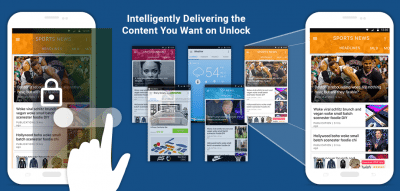Mobile Posse study seeks to quantify mobile user engagement
How smart is a smartphone, if it isn’t delivering content that engages the user from the first moment they pick up their device?
A recent study commissioned by content delivery company Mobile Posse found that despite the fact that about 70% of people report using their phones to kill time, nearly one-quarter of them pick up their phones and close out of whatever is on the first screen within three seconds.
“It’s been 10 years since the iPhone was introduced. Since then, the world has changed quite a bit,” said Greg Wester, EVP of marketing for Mobile Posse. “People now want — you might even say, need — their information at their mobile fingertips. But the basic mobile experience hasn’t really changed that much. We use apps, surf the web and unlock our phones to search for what we want and wait for it to load. That really

hasn’t changed in 10 years.”
In addition, Wester said, “we need better measurement than what’s happening in mobile.” Or as John Schiela, president of converged technology and media for Phoenix Marketing International (which partnered with Mobile Posse on the report) put it, there is an “utter absence of a thorough understanding of the complete mobile journey. There has
been little insight on how well today’s devices fulfill our day-to-day, even hour-to-hour conscious (and increasingly unconscious) desires. There was little research on potential new experience for the mobile first screen experience. Basically, there was little thorough research at all.”
Mobile Posse attempted to improve that situation with its new report. The “First Dibs” report was based on device-based unlocking data from 1,000 Android users over the course of a week, plus an online survey asking users specific questions to try to get a more precise view of user behavior: how they navigate their phones and how quickly users can access content that keeps their attention.
Mobile Posse found that users unlock their phones, on average, more than 70 times per day — and when they unlock their phones, there are three possibilities for what they see. Forty-nine percent of the time, users unlock their screen and the last app that they had open appears; 31% of the time, they land immediately on their home screen; and 19% of the time, they go straight to a newly opened app — typically as the result of a push notification.
Among the findings of Mobile Posse’s survey:
-While 39% of survey respondents said that they kill time with specific apps in mind, 47% reported that phone unlocks happen with no particular app in mind.
-Forty-two percent of mobile sessions were what Mobile Posse classified as “idle” sessions: of short duration, without a particular task or social media engagement.
-Mobile Posse found that the “first screen” open after unlocking only keeps a user’s attention about 22% of the time.
-85% of users indicated that they enjoyed opening their phone and having useful content immediately visible. Only 10% responded negatively, saying that they wouldn’t want an app to open without them initiating it.
Mobile Posse’s position is that carriers and device manufacturers are in the best position to capitalize on a better content experience for users. Carriers, Wester noted, “are one of the few folks who can change how the devices work, by pre-installing whatever they want on the devices.” While carriers are buying content companies like Yahoo and Time Warner, Wester said, most content sources actually get their traffic from Facebook: an unavoidable middle-man.
“As one of the few companies that can impact the mobile experience of their subscribers, it’s super important for them to think broader,” said Wester.
Image copyright: dedivan1923 / 123RF Stock Photo

